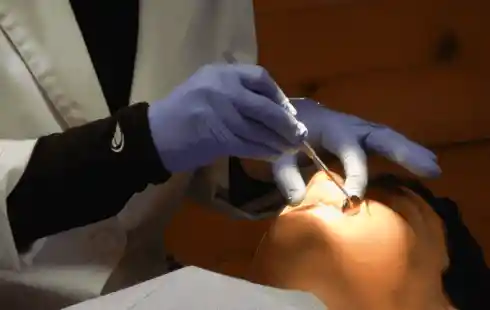
Crypto Investment Entry and Exit Strategies of Institutional Investors
Section: Business
 In the realm of healthcare, dental health often takes a backseat despite its integral role in overall well-being. While strides have been made to improve access to dental care, significant disparities persist, leaving many communities underserved and vulnerable. Addressing these inequities requires a multifaceted approach aimed at breaking down barriers to care and ensuring that dental health becomes a priority for all.
In the realm of healthcare, dental health often takes a backseat despite its integral role in overall well-being. While strides have been made to improve access to dental care, significant disparities persist, leaving many communities underserved and vulnerable. Addressing these inequities requires a multifaceted approach aimed at breaking down barriers to care and ensuring that dental health becomes a priority for all.
The State of Dental Health Disparities
Recent studies shed light on the pervasive nature of dental health disparities. According to the Centers for Disease Control and Prevention (CDC), individuals from low-income households are less likely to visit the dentist regularly, leading to higher rates of untreated dental issues. Moreover, minority communities, including African American and Hispanic populations, experience disproportionately higher rates of dental disease compared to their white counterparts.
Access to dental care remains a primary concern, particularly in rural and underserved urban areas. Limited availability of dental providers, coupled with financial constraints and inadequate insurance coverage, further exacerbates the problem. As a result, preventive measures such as routine cleanings and screenings are often neglected, leading to more severe dental problems down the line.
Barriers to Care
Several factors contribute to the barriers preventing individuals from accessing dental care:
Financial Constraints: The cost of dental treatment remains a significant deterrent for many individuals, especially those without insurance coverage. Even with insurance, out-of-pocket expenses for dental procedures can be prohibitive for low-income families.
Limited Provider Availability: In rural areas and inner cities, the shortage of dental professionals is a pressing issue. This scarcity forces residents to travel long distances or endure lengthy wait times for appointments, discouraging them from seeking timely care.
Lack of Education and Awareness: In some communities, there exists a lack of understanding about the importance of dental health and preventive measures. Without proper education, individuals may not prioritize regular dental check-ups or adopt healthy oral hygiene habits.
Cultural and Language Barriers: Cultural differences and language barriers can hinder effective communication between patients and dental providers, leading to misunderstandings and reluctance to seek care.
Addressing Disparities Through Innovation
Efforts to bridge the gap in dental health disparities are underway, with initiatives focusing on innovative solutions to improve access to care:
Telehealth Services: Telehealth platforms are increasingly being utilized to provide remote consultations and triage services for dental issues. This approach helps reach individuals in remote areas and those with limited mobility, allowing them to receive timely advice and guidance from dental professionals.
Mobile Dental Clinics: Mobile dental clinics bring essential oral health services directly to communities in need. These clinics, equipped with basic dental facilities, travel to underserved areas, providing screenings, cleanings, and preventive care to individuals who may otherwise go without.
Community Outreach Programs: Community-based organizations and nonprofits play a crucial role in raising awareness about dental health and providing resources to underserved populations. These programs offer educational workshops, free screenings, and assistance in navigating the healthcare system.
Policy Reforms: Advocacy for policy changes aimed at expanding dental coverage and incentivizing providers to serve in underserved areas is essential. By increasing funding for dental public health programs and implementing loan forgiveness programs for dental professionals practicing in these communities, policymakers can help address the shortage of dental care in underserved areas.
While progress has been made in addressing dental health disparities, much work remains to be done. Sustainable solutions must be implemented to ensure that everyone has access to quality dental care, regardless of their socioeconomic status or geographic location. Collaboration between healthcare providers, policymakers, community organizations, and individuals themselves is essential in overcoming the barriers to care and promoting oral health equity.
As we strive for a future where dental health disparities are eradicated, it is imperative that we prioritize preventive care, expand access to affordable services, and empower communities to take charge of their oral health. By breaking down barriers and fostering a culture of inclusivity and equity in dental care, we can build a healthier, more vibrant society for generations to come.
Image by Michael Larsson from Pixabay

Section: Business

Section: Arts

Section: Arts

Section: Business

Section: Business

Section: Arts

Section: Health

Section: Arts

Section: News

Section: News
Health Insurance in Germany is compulsory and sometimes complicated, not to mention expensive. As an expat, you are required to navigate this landscape within weeks of arriving, so check our FAQ on PKV. For our guide on resources and access to agents who can give you a competitive quote, try our PKV Cost comparison tool.
Germany is famous for its medical expertise and extensive number of hospitals and clinics. See this comprehensive directory of hospitals and clinics across the country, complete with links to their websites, addresses, contact info, and specializations/services.
Join us for the 10th Summer Concert at the Heilig Geist Church, featuring the captivating sounds of two trumpets accompanied by a majestic organ. This concert will showcase works by renowned composers including J.S. Bach, A. Torelli, P. Franceschini, H. Purcell, and others.



No comments yet. Be the first to comment!